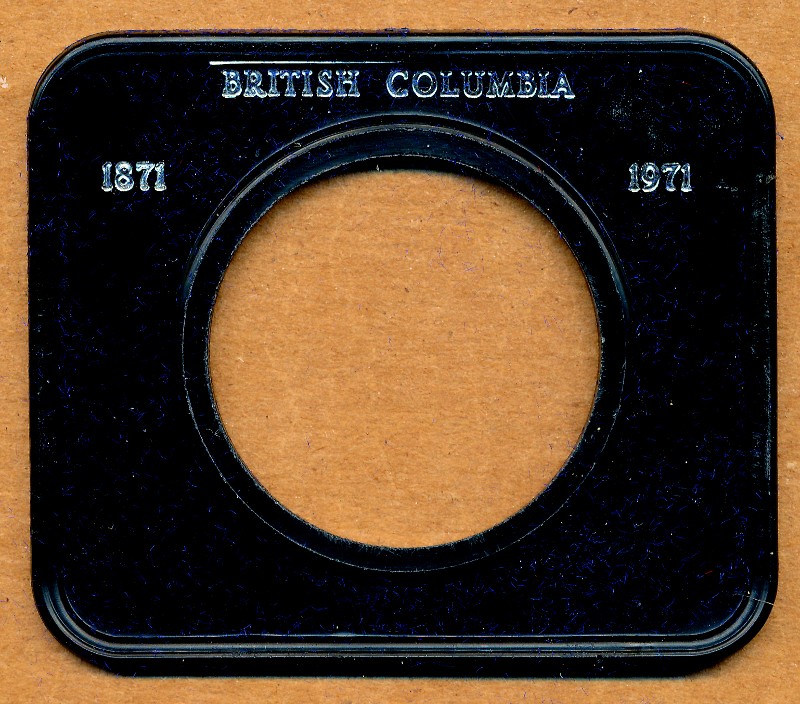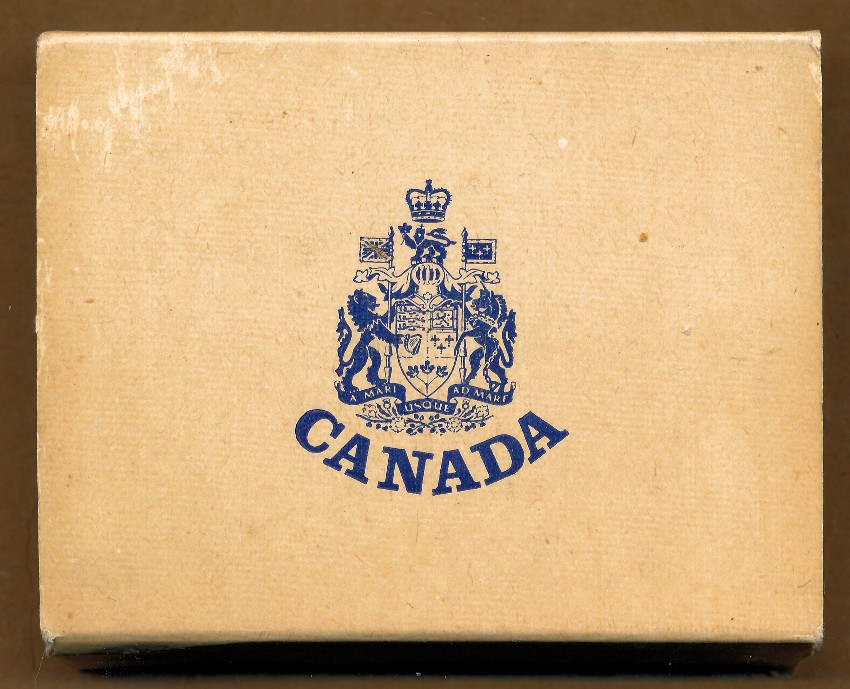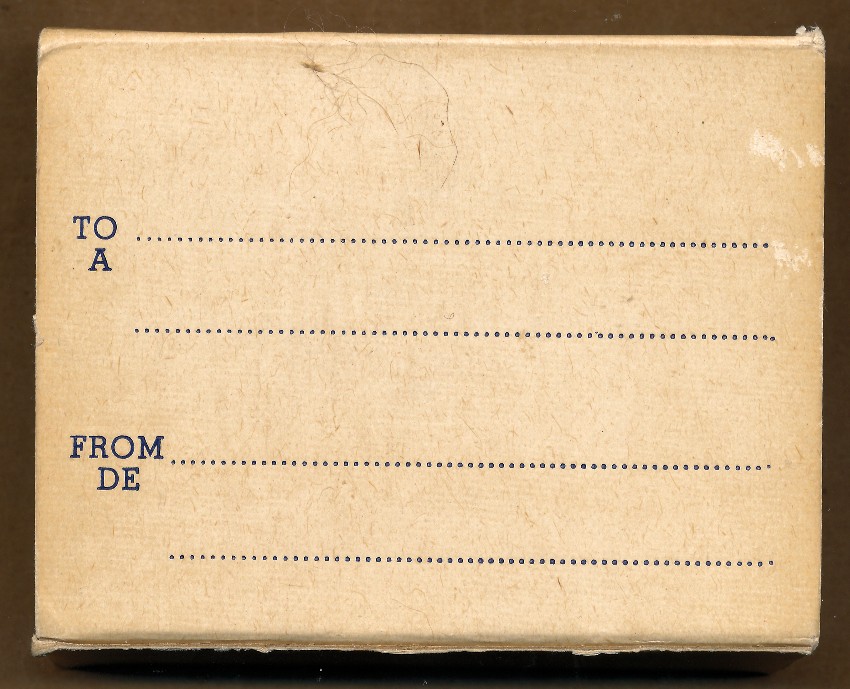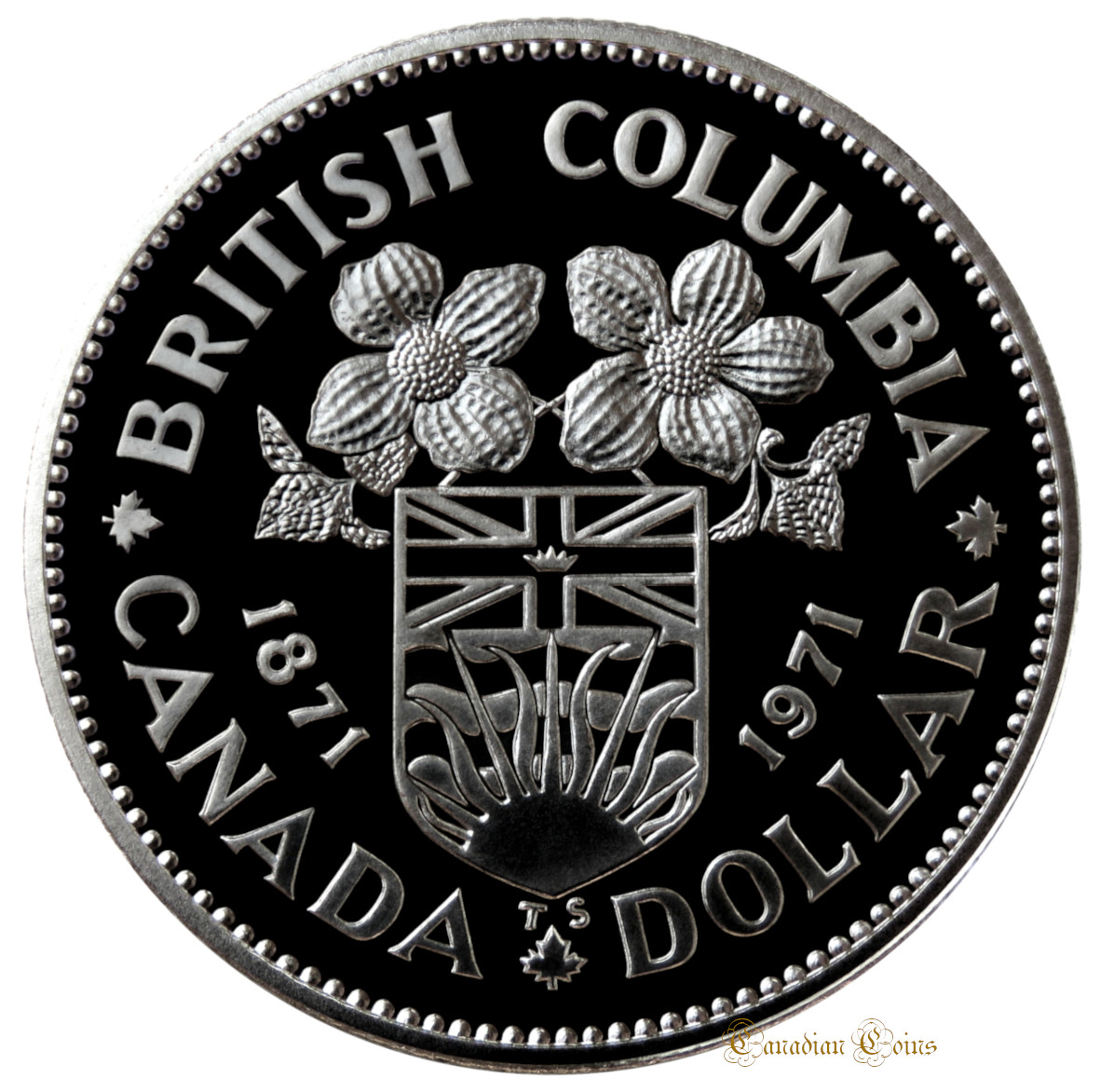In 1971, the Royal Canadian Mint issued two commemorative dollar coins to mark the centennial of British Columbia joining the Canadian Confederation: 1) A nickel dollar for circulation, with versions for collectors, and 2) A collector-only silver dollar (0.500 fine). British Columbia joined the Canadian Confederation on July 20, 1871.
As with the 1970 Manitoba Centennial coin, an open design competition was held and overseen by the Mint; over 2,000 entries were received. The design entered by Thomas Shingles, a former chief engraver of the Canadian Mint, was selected as the winner and earned him a prize of $3,500.
The winning commemorative design for the nickel dollar presents a version of the British Columbia Provincial Coat-of-Arms that conforms to the elements granted to British Columbia in 1906 by King Edward VII. Being a smaller diameter than the silver dollar - 32.15 millimeters vs. 36.07 millimeters - Shingles wisely decided to feature only the Shield portion of the Arms, surmounted by a pair of Dogwood Blossoms. It is missing the Shield's supporters, the Royal Crest, the Official Motto and the Dogwood flower chain below the Shield - all elements typically presented with the Arms, though not granted by the British Monarch until 1987 via Queen Elizabeth II. (The Dogwood is the official provincial flower of British Columbia.)
The top segment of the Shield features the Union Jack with an antique crown at its center; it is symbolic of British Columbia's original establishment as a British Crown Colony and its ongoing connection (as part of Canada) to the United Kingdom. (The Union Jack was a national emblem of Canada at the time the Province joined the Confederation - it often flew as Canada's flag.) Below the Union Jack is found a setting sun with its rays in front of a series of wavy lines (the lines are blue on a white field in colour versions of the Arms). The wavy lines are symbolic of the sea/Pacific Ocean and the sun was originally meant to represent the glory of British Columbia, though today (per the BC government web site) it is officially symbolic of British Columbia being the most westerly of Canada's Provinces.
(Note: the Yukon Territory incorporates some points further west vs. the Province of British Columbia.)A more complete version of the Arms appears on the 1971 non-circulating legal tender (NCLT) silver dollar collector coin for British Columbia - it was the work of Patrick Brindley. (The SD will be the subject of a future post.)
You might be asking...I thought Canada issued a British Columbia Centennial coin in 1958 ("The one with the totem pole!"). Why was another centennial commemorative issued 13 years later? The 1958 coin marked the 100th anniversary of the local gold rush and the creation of the British Columbia Crown Colony. The 1971 coin commemorated the centennial of the Province of British Columbia joining the Canadian Confederation as its sixth member.
The coin was available in circulation (at face value) and cased for $2.00. It w as available with the 1971 Proof-Like Set which was issued at $4.00 (all prices in Canadian dollars).
1971 Mintage FiguresCirculation Coin: 3,659,145
Collector Coin: [Specimen finish] 181,091
Collector Coin: [Included in Proof-Like Sets] 253,311
The coin was packaged within a descriptive, black plastic frame that was inserted into a navy blue, rectangular clam shell case. Canada's Coat-of-Arms and "CANADA" is printed in silver on the lid of the case. The clam shell was fitted into a white outer sleeve with the Coat-of-Arms and "CANADA" printed in navy blue on its top panel.
1971 British Columbia Centennial Nickel Dollar - Commemorative Reverse 1971 British Columbia Centennial Nickel Dollar - Clam Shell Case - Front
1971 British Columbia Centennial Nickel Dollar - Clam Shell Case - Front 1971 British Columbia Centennial Nickel Dollar - Printed Insert Frame
1971 British Columbia Centennial Nickel Dollar - Printed Insert Frame 1971 British Columbia Centennial Nickel Dollar - Outer Sleeve - Front
1971 British Columbia Centennial Nickel Dollar - Outer Sleeve - Front 1971 British Columbia Centennial Nickel Dollar - Outer Sleeve - Back
1971 British Columbia Centennial Nickel Dollar - Outer Sleeve - Back
For other of my posts about commemorative coins and medals, including more Canadian Commemorative stories, see:
Commems Collection.

























